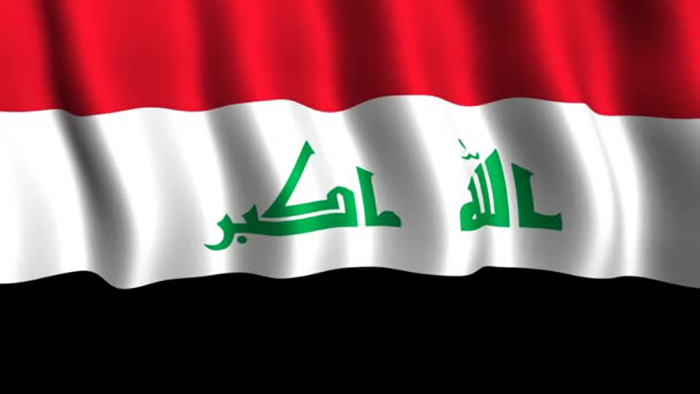Analyses / Middle East / North Africa
14 February 2025
The Role of Iraq in a Reshaping Middle East

Long structured by rivalries surrounding Iran and its regional allies, the Middle East seems to be entering a new phase. This evolution is largely explained by the Israeli response to the attacks carried out by Hamas on October 7, 2023, which destabilized regional power dynamics on various scales. The military and political weakening of Hezbollah, combined with the fall of Bashar al-Assad’s regime on December 8, 2024, has weakened the “axis of resistance” by disassembling its components and reducing its capacity for action. Unlike Hezbollah, the pro-Iran militias in Iraq had a limited role in the confrontation with Israel. This relative withdrawal has preserved Iraq’s stability, offering it the opportunity to reposition itself on the regional chessboard. Aware of the notable weakening of its Iranian partner, Baghdad may thus seek to emancipate itself from its influence. In this context, what position is the Iraqi government attempting to assert in a shifting Middle East and with the beginning of Donald Trump’s new term?
The reaction of Iraq to the fall of Al-Assad
The fall of Bashar al-Assad in Syria was perceived as a major risk for all neighboring countries, raising concerns about a potential remobilization of the Islamic State and a struggle between various factions for control of the territory (Syrian Democratic Forces, Free Syrian Army…). As a result, the Iraqi government and the majority of pro-Iranian militias prioritized securing their border over supporting Al-Assad’s regime.
Iraqi Prime Minister Mohamed Chia Al-Soudani quickly established contact with Ahmed Al-Shara’a, the interim Syrian president, in order to support the ongoing political transition. Baghdad is now seeking to normalize its relations with the new power in place and position itself as a potential intermediary between Syria and Iran. Although the Syrian leader condemned the actions of the pro-Iranian militias, the Syrian government does not intend to confront them and calls for a more “positive” regional involvement from Iran.
This policy of openness would allow Iraq to participate in regional stabilization while distancing itself somewhat from Iran. In this context, Baghdad would adopt a certain neutrality and aspire to play a constructive role in the region.
Baghdad’s Ties with the West
Although certain factions in Iraq are considered part of the “axis of resistance,” Iraq finds itself at the crossroads of Iranian and American influence in the region.
As part of the fight against the Islamic State, 2,500 U.S. soldiers remain stationed on Iraqi soil. Despite a mutual desire for troop withdrawal over the years, these forces are still in place to combat Iranian influence, with Iranian-backed militias intensifying their attacks on U.S. positions since October 2022. Caught between attacks from these militias and U.S. pressure for a secure disengagement, the Iraqi government finds itself in an uncomfortable position, having to navigate between two antagonistic actors.
For Donald Trump’s second term, Baghdad holds a special place, being considered one of the last bastions of Iranian influence. In this context, before the start of his term, Trump sent a message to the Iraqi authorities encouraging them to reduce the proliferation of weapons outside of state control and to curtail the influence of pro-Iranian groups.
This message specifically targets the forces of the Hashd al-Shaabi (Popular Mobilization Units), a key player in the fight against the Islamic State, but also the primary vector of Iranian influence in Iraq.
Iraq facing Iranian influence
Initially organized as a confederation of militias, Hachd Al-Chaabi has established itself as an integral component of Iraqi politics. With the passage of a law on November 26, 2016, the Parliament ensured its non-demobilization, the maintenance of its weapons, and allowed its integration within the Iraqi state by placing it under the authority of the Prime Minister. However, it retains a certain autonomy, granted by the special status the military formation holds. Both integrated into the Iraqi state and part of the “axis of resistance,” this structure can justify operations outside the state’s framework, particularly against American positions.
At the same time, Hachd Al-Chaabi has developed political branches that allow it to sit in Parliament and influence electoral outcomes. This organization, aligned with Iran’s interests, can exercise direct control over Iraqi politics.
Despite this internal power, Iranian influence is being tested by the ongoing changes in the Middle East. Confronted with the Iraqi government’s desire for emancipation, Ayatollah Khamenei reiterated his commitment to Hachd Al-Chaabi and expressed a desire to strengthen it during a meeting between the two governments on January 8, 2025.
This statement highlights the divergence of interests between Iran and the United States regarding Iraq. While Iraq seeks to maintain a balanced position, it remains a secondary actor caught in global rivalries. Lacking the tools to break free from this situation, the Iraqi government can only advocate for cooperation between the two rivals. In this regard, on February 3, 2025, the Speaker of the Iraqi Parliament called on the Iranian government to engage in sustained dialogue with Western countries to support regional security.
The Iraqi government would like to position itself as a mediator between the two powers. While the Trump administration seeks both to withdraw its troops, stabilize the region, and prevent Iran from acquiring nuclear weapons, in-depth negotiations will be necessary. These could include issues related to pro-Iranian militias, as well as support for the Houthis in Yemen, as bargaining leverage.
However, the scenario of a successful negotiation between Iran and the United States remains uncertain despite Tehran’s desire to avoid direct confrontation. Indeed, the regional context pushes Iran to secure its protection, as unconditional U.S. support for Israeli policy appears to continue.
The question remains whether Baghdad will be able to take advantage of this regional reconfiguration to gain more autonomy, or if the country will remain trapped in its internal divisions and the rivalry between Washington and Tehran.

